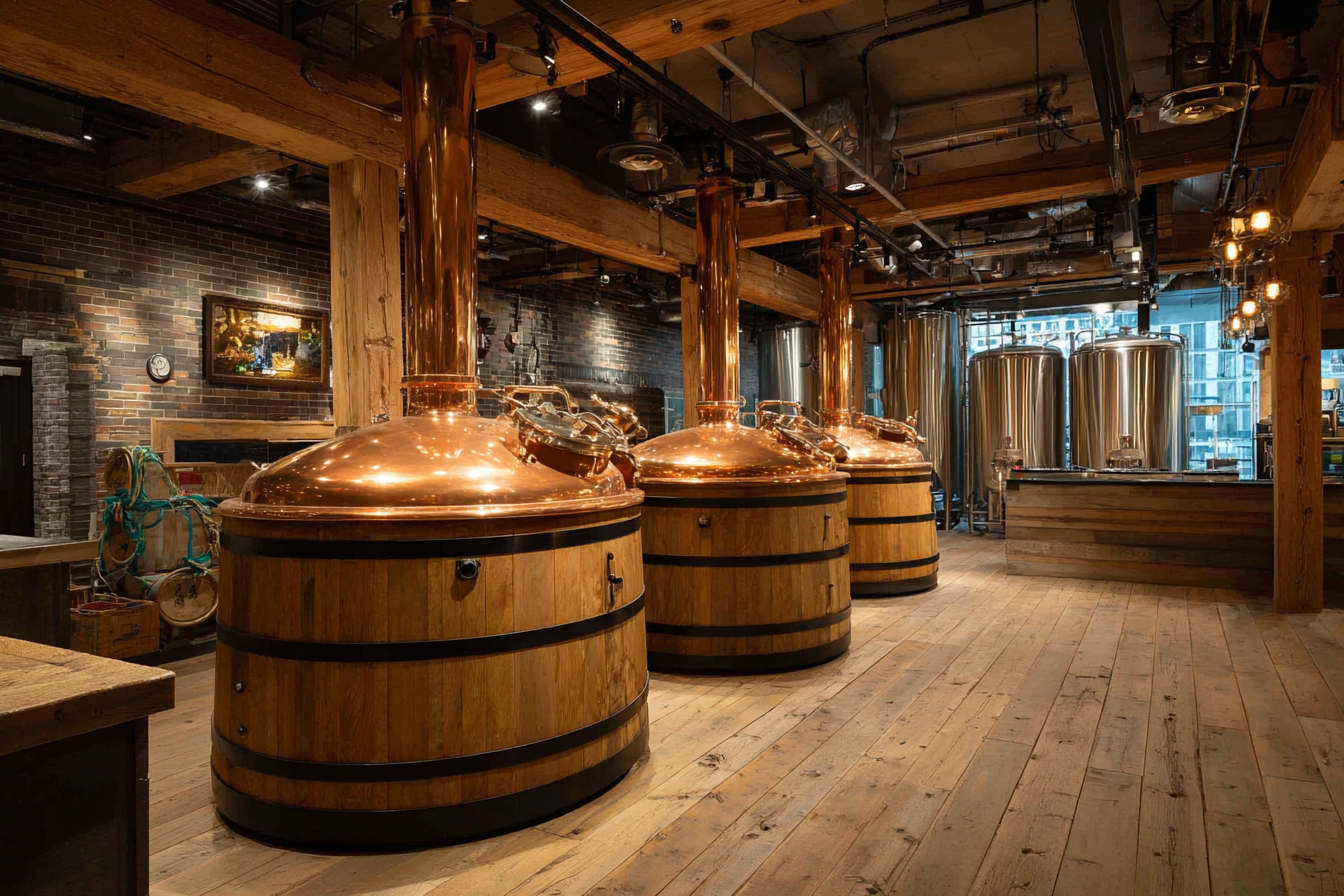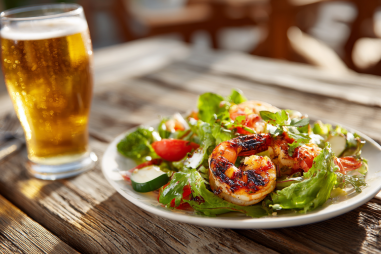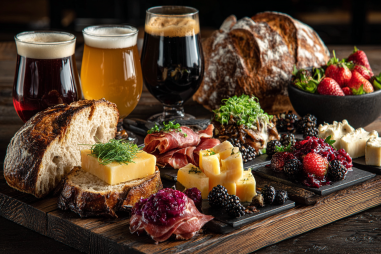Sour beer has long been cherished in Europe for its complex flavors and unique fermentation processes. In recent decades, American brewers have embraced this intriguing style, blending tradition with innovation to create vibrant, diverse sour beer offerings. The story of American sour beer is one of passion, experimentation, and a deep appreciation for craft. Let’s journey through its history and explore how sour beer has evolved from imported inspiration into a cornerstone of the American craft beer movement.
Origins of Sour Beer Globally
The roots of sour beer trace all the way back to ancient brewing practices, where wild yeasts and bacteria naturally fermented beer. In Europe, countries like Belgium, Germany, and parts of France developed distinct sour styles over centuries. Belgian lambics, gueuze, and Flemish red ales are some of the most iconic, known for their tartness that comes from spontaneous fermentation using native wild yeasts and bacteria such as Brettanomyces, Lactobacillus, and Pediococcus.
Germany’s Berliner Weisse style, characterized by low alcohol and refreshing sourness, also holds a special place in sour beer history. In northern France, bières de garde sometimes carry a mild sour character. These sour beer traditions were often regional and artisanal, passed down through families and small breweries, creating rich cultural legacies tied to their local environments and aging methods.
Early Sour Beer Influences in America
Before the craft beer boom, sour beer was relatively unknown to most American drinkers. American brewing largely focused on clean lagers and ales free from sourness, especially during and after the Prohibition era when many breweries consolidated or closed. However, some imported European sour beers did begin to appear in specialty beer shops and bars from the 1970s onward, introducing American consumers to these tangy, funky flavors.
Homebrewers and adventurous brewers in the 1980s and ’90s started experimenting with wild yeasts and souring techniques inspired by European traditions. This early interest laid the groundwork for a growing appreciation of sour beer, yet such brews remained niche and relatively hard to find. It was the craft beer revolution that provided sour styles room to flourish.
The Craft Beer Revolution and Its Impact on Sours
The craft beer revolution of the 1990s and 2000s unleashed a wave of creativity and independence in American brewing. Craft brewers sought to push boundaries beyond conventional brew styles, and sour beer presented a thrilling challenge and opportunity. While initially challenging because souring takes longer and involves complex microbiology, the demand for new and bold flavors was undeniable.
This revolution brought increased experimentation with barrel aging, mixed fermentation, and blending – key techniques in sour production. The culture of collaboration and education among craft breweries helped demystify sour brewing. As breweries began to establish dedicated sour programs, sour beers moved from curiosities to sought-after specialty releases. This period marked the start of sour beer becoming a vital part of the American craft scene.
Key Breweries and Pioneers in American Sour Beer
Several breweries and brewers have been pivotal in advancing American sour beer. Some notable pioneers include:
- Jolly Pumpkin Artisan Ales (Michigan) – Known for their wild and sour ales made with native yeasts and elaborate barrel-aging processes, Jolly Pumpkin was one of the earliest American breweries focusing on authentic sour production.
- The Bruery’s Terreux (California) – This project from The Bruery pushed wild ales with a blend of American innovation and Old World techniques, popularizing funky, sour beers with modern twists.
- Russian River Brewing Company (California) – Their sour program, including the celebrated “Supplication” and “Consecration,” showcased complex barrel-aged sours that gained national acclaim.
- New Belgium Brewing (Colorado) – New Belgium’s “La Folie,” a traditional-style sour brown ale, was instrumental in introducing American drinkers to serious barrel-aged sour beers.
- Allagash Brewing Company (Maine) – With beers like Allagash Curieux and their Belgian-inspired wild ales, Allagash blended regional techniques with a distinctly American craft approach.
These breweries, among others, helped establish sour beer as both a respected tradition and a platform for innovation in the US.
Evolution of Techniques and Styles Over Time
American brewers have experimented widely with sour beer techniques and styles, evolving far beyond traditional European methods. Key developments include:
- Mixed fermentation: Combining yeast strains with bacteria to develop complex sourness and funk.
- Barrel aging innovations: Using different types of wood and aging vessels to influence flavors, including wine, bourbon, and even tequila barrels.
- Fruit additions: Incorporating native and exotic fruit to complement and balance sourness, creating vibrant, approachable sours.
- Kettle souring: Introducing rapid souring using Lactobacillus in the brew kettle, shortening production times and expanding availability.
- Blending: Crafting multi-year-old blends to achieve perfectly balanced sour profiles, mimicking traditional Belgian gueuze methods but adding American twists.
Styles have also diversified significantly, with American sour beers ranging from tart and dry Berliner Weisse-inspired brews to big, fruit-forward wild ales and intensely funky, barrel-aged masterpieces. The freedom of innovation paired with respect for tradition continues to drive evolution.
Current Trends and the Future of American Sour Beer
Today, sour beer occupies a prominent place in the craft beer world. Emerging trends include:
- Increased accessibility: More breweries are producing approachable, sessionable sours with moderate tartness to attract a broader audience.
- Regional terroir exploration: Brewers experimenting with local wild yeasts, bacteria, and fruits to create truly regional sour beers.
- Hybrid styles: Combining sour techniques with IPAs, stouts, and farmhouse ales to create hybrid brews that defy traditional style definitions.
- Collaborations: Cross-country and even international collaborations that exchange knowledge, yeast strains, and barrel stock.
- Advanced barrel programs: Greater use of non-traditional barrels and aging methods to deepen complexity.
Looking ahead, American sour beer is likely to continue expanding both in production scale and stylistic diversity. As consumer palates grow more sophisticated, brewers will balance experimentation with reverence for the practices that first made sour beer beloved worldwide.
A Legacy of Tradition Meets a Future of Innovation
The history of American sour beer reflects an exciting synthesis of old and new. Rooted in the wild yeasts and barrel-aging traditions of Europe, American brewers have made sour beer their own by embracing experimentation and regional character. From small pioneering breweries to large craft producers, the sour beer scene is thriving, offering everything from sharp, refreshing sours to rich, complex blends that age beautifully.
As craft beer continues to evolve, sour beer stands as a testament to creativity, patience, and respect for heritage. Whether you’re a longtime fan or new to the tart, funky world of sours, the journey of American sour beer is a story worth toasting to—one full of flavor, history, and endless possibility.







